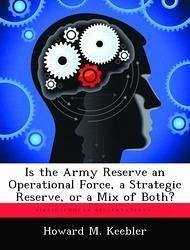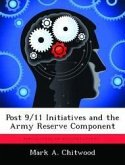The United States Army Reserves (USAR) role has changed multiple times throughout its history. It was founded as a medical reserve corps. In that role, it supplied individual replacements to the Army. The USAR continued to be developed into a Cold War force. It would then change again from a Cold War force to a modular force operating in the 21st century. Since the attacks on the World Trade Center, the Army and its Reserve Components (RC) have faced new challenges. The Army has had to rethink and assess what role the USAR will play in the future. Department of Defense (DOD) Directive 1200.17 dated October 29 2008 defines that role. It describes the role of the RCs as providing operational capabilities and strategic depth to meet all requirements across the full spectrum of conflict. This paper will review the roles described in the DOD directive. The thesis will establish how the United States reserve force was created and then the purpose of having a reserve force. It will then establish the strategic reserve role played by the USAR. This will be accomplished by an in depth historical perspective of the USAR. The historical perspective will include the creation of the USAR through the Gulf War.








